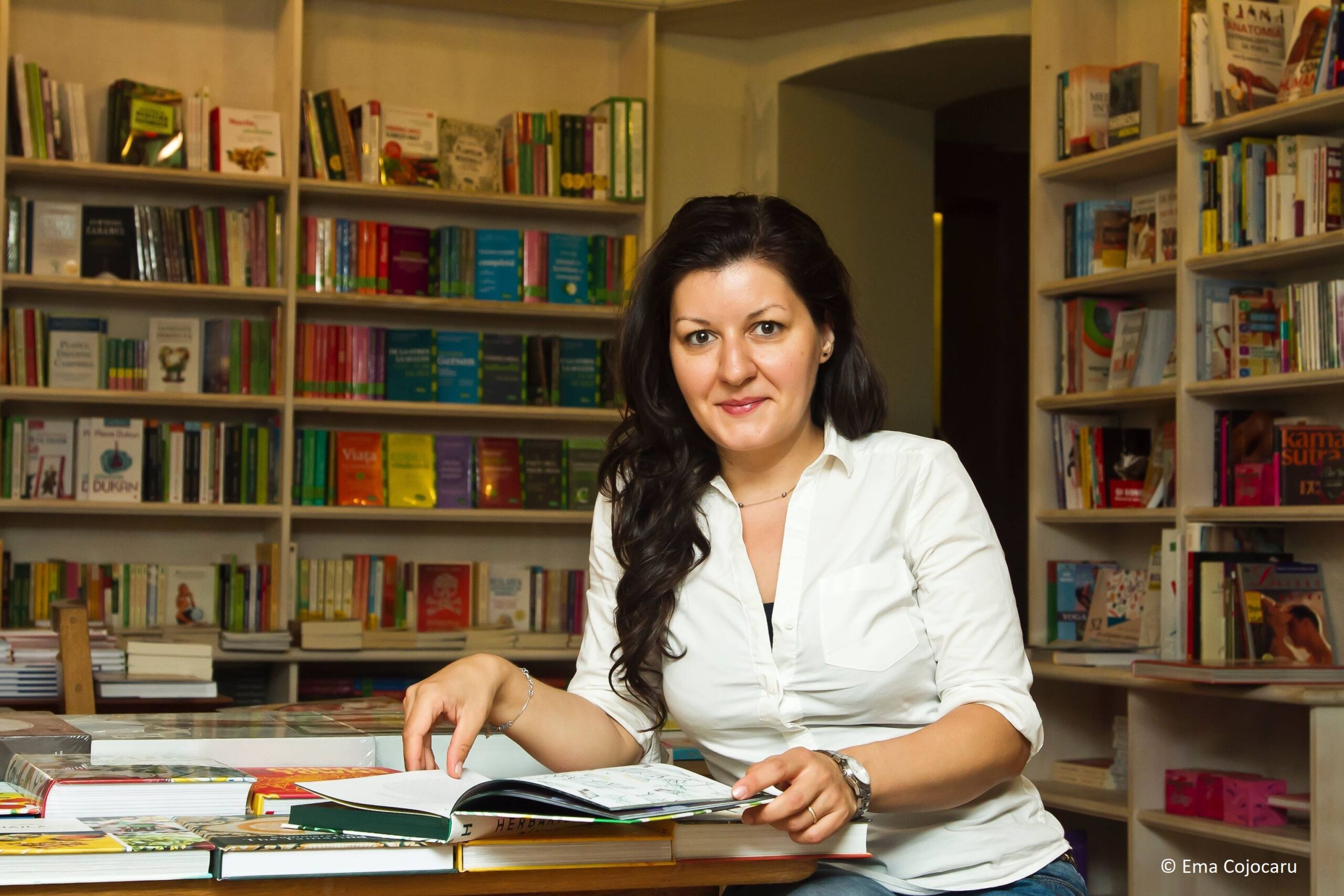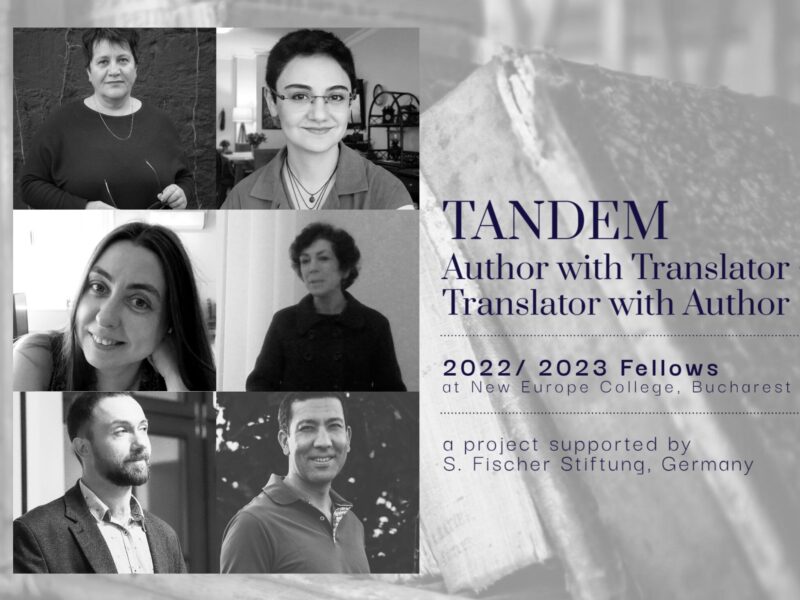Laura Câlțea is the editor-in-chief of ORION, Nemira Publishing House’s nonfiction imprint. Before this, she coordinated Nemira’s children imprint, Nemi. Long-distance runner’s blog is the place where Laura has been writting about books since 2014 and around which she created a reading community. She organizes and hosts several book clubs and she also published a book, her PhD thesis, A juca sau a fi jucat: Ingmar Bergman și șahul cu moartea. She collects pencils, has a super reading armchair and is always up-to-date with the novelties in the Romanian book industry. And although she says she cannot read all the books in the world, I am sure it’s not true.
You are a book editor, you read books, you promote and talk to people about books. What do you do in your spare time?
If it is really spare time, I read. If I do not have a book in my hands or work at my laptop, I spend time with my family, I rearrange stuff in my house, I watch movies, I knit (these two go always together; once I went to the cinema with the knitting project I was working at at that time), I do shopping, I walk. You know, things all the superheroes do.
When and how did you start working at Nemira?
I started working at Nemira in Fall 2015. A year before that I kept trying finding a job in the book industry, but I had not found anything, so I’d decided to stay home for one year (supported by my mom and my back then boyfriend who is now my husband) and launch and take care of my book blog. This is how I got to be known in the industry, so, after one year, it wasn’t me looking for a job anymore, but the editors started to contact me. The first one was Ana Nicolau, Nemira’s manager, who texted me and suggested a meeting, where she asked me if I wanted to coordinate their children imprint, Nemi. At the beginning I was a bit disappointed and didn’t trust this too much, because, of all, back then I was interested the least in children’s literature. But Ana did not rush me, I had time to think about it, we had other meetings too, she presented me what this job implied so I gut used with the idea. After all, I had to start from somewhere. In the end, it wasn’t such a bad idea, on the contrary. The books for children are extremely diverse and have all sort of details you have to pay attention to (fonts, illustrations, paper, translation etc). And it was even better I started this way.
How is a new imprint born? Focus: ORION.
ORION was not born in 2021, but in 2018. I had been working at Nemira for 3 years already, Nemi had become a solid independent collection, so, when we talked about focusing more on nonfiction books, I suggested I could be in charge of this new imprint. Meanwhile, I got pregnant and, even though I thought I would go back to work after a couple of months, I had an almost
I began by getting up-to-date with the editorial novelties. During my maternity leave I tried to stay in touch with the new books from both international market and the local one, I made lists of titles, topics and publishing houses, but when I came back I needed to do a more focused research, so I carefully browsed through the catalogues received from the foreign publishing house or the literary agents and also through Nemira’s backlist. And I drafted some plans. Launching a new imprint starts with a certain individual perspective, but it is not limited to this, so from September 2020 until February 2021 I had many meetings with my colleagues from Marketing, PR, Social Media, sales, editing and design departments. It is a team work which one has to properly coordinate in order for things to work well. I am the coordinator of this collection, but behind me there’s my mane colleagues’ work, which are not visible to the public but whose contribution is very important.
How are the new titles selected?
First, you have to know very well what you want to publish, but also what sells well. Each editor has his or her dream lists, but these are not (at least not all of them) the same as the lists he or she actually publishes. Selecting a title or another starts with the catalogues sent by the foreign publishers or the agents and also with the research one does in the internet or in or in other books. Then there are also the recommendations the publishers or the agents send and the manuscripts the Romanian authors send directly to Nemira. Sometimes you find a title you consider interesting in a catalogue and you request the manuscript; sometimes you find a topic that you think your audience will like and then you start looking for books which cover it; and there are also situations when you look for specific books you know your audience will appreciate and buy, books you like as a reader and an editor. There are many things to be considered, but two of the most important are the quality of the content and the audience’s preferences. There are books which one publishes for their commercial success and others for educational purposes. The ideal situation would be for the two to join forces, but usually they have distinctive trajectories.
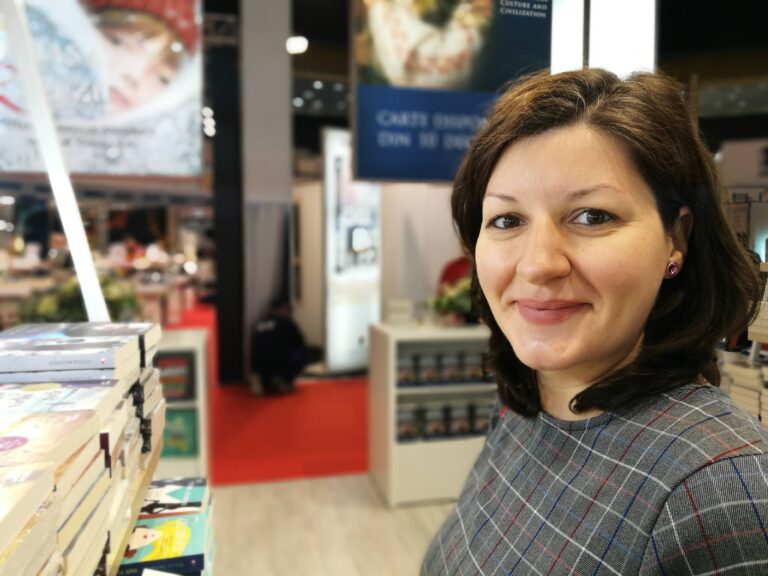
Which are the next steps in the publication of a book and how do you take part at them?
After we choose a title (it is first my call, but then it has to be approved in the editorial meetings which are attended by many other departments) we buy the rights for it (the agent receives an offer which is accepted or not), then the book is translated, copy-edited, proofread, the page layout is done, we check everything and send it to print. At the same time, we start preparing the cover and the marketing and PR campaigns. I take part at all this - choosing the translator, the copy editor and the proofreader, choosing the cover, planning the promotion and marketing campaigns and sending it to print.
Do you judge a book by its cover as an editor? What about as a reader? Who decides who a cover should look for ORION books?
Yes, of course. It’s just that, until the original book has to have a cover I have already read it, so it does not influence me so much. One of the steps of a book’s publication, which readers rarely are aware of, is that many times books are read and acquired long before they reach their final form. You can even buy the idea of a certain book. An author can suggest an editor a, let’s say, psychology, self-help, a memoir book and he or she can have 2 years to actually write it. But first he or she sends a proposal and a first chapter (but sometimes you don’t even get this) to convince you to buy its rights. But when this book gets a cover, it’s no novelty for me anymore.
Of course, nobody can read everything and be aware of everything that’s new. So there are books which I see only when they are launched or published on the bookstores’ sites, and the first thing I notice it the cover. I do care what a cover looks like and I do judge a book by its cover both as an editor and as a reader. And everyone in this industry does this, because, as you gain experience, you can tell a lot on a book (like its genre, which is the most obvious) by only seeing its cover. I think a cover can fool me more as a reader than as an editor, because a beautiful cover can convince me to buy a book without actually read it. As an editor I have never bought a book without reading it or without knowing at least some important details about it (coming back to what I said above about acquiring a book on a proposal stage).
The covers for the ORION books are first drafted by me and my colleague from the design department, then they reach my other colleagues, who can approve them or suggest all kind of things, and after that they are sent for the external approval or to the authors. Fortunately, I work with a brilliant designer (Alin-Adnan Vasile), so this is an easy process, we have never had covers which have not been approved.
How many people in the publishing house work for a book like the ORION ones? And how long it takes to make one?
More or less, almost all of us work on a book. Each has his or her part. First there are my colleagues from Rights department, who get in touch with the foreign publishing house/agent/author. They are the ones who make sure we get the manuscripts, the ones who send the offer, sign the agreements, provide us all the files and necessary technical specs of the book. Then there are the translators, the copy editors, the proofreaders (many of them are outside collaborators), a DTP colleague (who does the layout), the cover and promotional materials designer, the production manager (who is in touch with the printing partners, who chooses the paper and takes care of the quality of the final product), Marketing&PR department (who chooses the proper promotion means and channels), Sales department (who is touch with the bookstores and takes care the books reach the bookstores and the booksellers have all the necessary information) and, last but not least, there are our warehouse colleagues. Although they don’t get public visibility, our colleagues from Secretarial, Financial and Accounting department are equally important as they help us properly do our job. And, of course, above all, there is the general manager, who coordinate us all and whose opinion weighs the most.
Which are the instruments you use when you wear your copy editor cape?
First, I need a huge desk which can accommodate all my instruments: laptop, reading tablet, writing tablet, the foreign dictionary I need, usually an English or French one, The Explanatory Dictionary of the Romanian Language (DEX), The Orthographic, Orthoepic and Morphological Dictionary of the Romanian Language (DOOM) and a notebook. On my laptop I check different details, on my reading tablet I read the original text, on my writing tablet I make the annotations and the corrections, I check the meaning of certain words in the dictionaries and I use the notebook for noting down all kind of stuff I have to unify in the whole text (a specific form of a word, the general use of italic fonts or of quotation marks etc) or things I still have doubts on or I want to further discuss with a more experienced colleague. Once I wanted to brag about my desk and my instruments and I posted a photo on Facebook, wanting to show the people how I actually work when I copy edit a book. But I took it down after just one hour, as Marilena Iovu [literary agent] called me as she has seen that the details of my credit card were visible on a corner of the photo. I noted them down to avoid going after my wallet every time I paid online. That was a lesson not to brag about my job on Facebook anymore.
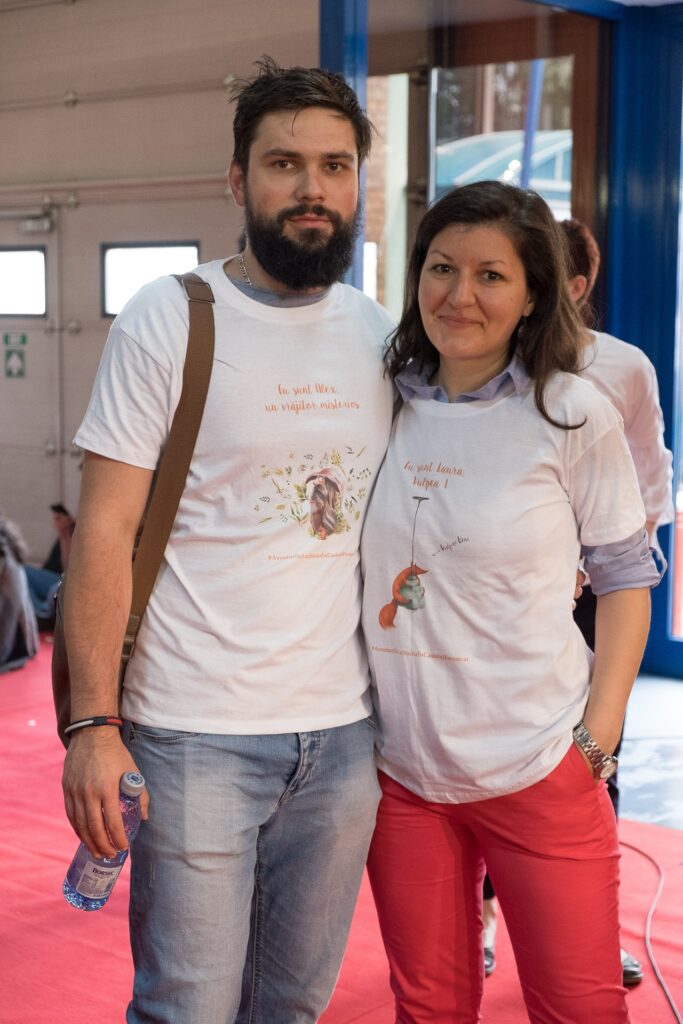
How do you decide the print-run of a new book?
This is not just my call, but we decide it after we talk with all the other departments (especially Marketing and Sales). When I suggest a book for publication, I also suggest a print-run (usually an idealistic one), based on the success other similar titles had or (usually) on my wish to convince my colleagues it’s a title which is worth to be bought. First we have to make some calculations which include all the expenses the book implies and so you can find out how many books you have to print and sell in order to cover these expenses and, ideally, obtain profit (I call it the magic excel). So the print-run is based mainly on these calculations. This is the standard procedure. There are also exceptions when you trust a title very much and you do not go for, let’s say, 2000 copies (which is the average print-run on our market), but start with a 10 000 copies (which, on our market, shows optimism and guts, or even bravery). Sometimes, you start with only 2000 copies to test the market and then, if you sell all of them in one month, you can print more. But this decision implies more departments and sometimes it’s not related only to the publishing house, but it depends on the bookstores too. We inform the booksellers on our editorial plans and they can request more copies of a title, so their feedback is also important. This usually happens with the commercially successful titles, which are also very successful abroad.
What’s next after a manuscript is sent for print?
First, you pray there is no mistake you overlooked (although you cannot to anything in this stage). The printing process usually takes around two weeks (when there are no textbooks or ballots ballots to be printed or Christmas or Easter are not close). There aren’t many things to be done while they are ready, usually we start the social media promotion, we send teasing materials and the editor forgets what he or she has faced with that book and starts another.
When can you consider a book you published to be a good investment?
If we talk in terms of an investment, then the most important element if the financial one. Many people seem to overlook the fact that a publishing house is actually a business whose success depends on the sale of the books they publish. I even know readers who use to disapprove a publishing house’s commercial success. A book is considered a good investment not when it sells enough to recover the costs, but when it sells well enough to make profit. This means that a book has to sell more than 1000-2000 copies, which is the average print-run. Thus, we should count not thousands of books sold but tens of thousands (at least, as for the moment I find it difficult to hope for more).
Are things different now than they were when you used to coordinate Nemi?
Yes, many things differ: I have a different target-audience, less illustrated books, more text books, I only publish nonfiction, so I have to be sure the facts in the book are correct and this is why, besides working with a translator, a copy editor and a proofreader, I also collaborate with a specialist who can identify the potential errors. But I feel this is where I really belong and this is what I should do. I am more comfortable dealing with nonfiction adult books than I was when I was working with books for children. I feel I have a bigger responsibility now. Even though I had this goal of educating the audience when I was at Nemi too, I think the stake is higher now because the books I publish are more complex and delivering a proper content takes a bigger responsibility.
Although most of ORION books are translated, you have also worked with the Romanian astronomer Adrian Șonka. You have also collaborated with Romanian writers and illustrators when you were coordinating Nemi. How does the relationship between an editor and a Romanian author work? Has any of them given you a hard time?
I always wanted Nemi to publish Romanian authors and this is one of my goals for ORION too. I already have some projects in progress, I do not want to have translations only. But, as I was mention above, this kind of projects takes a lot of time to be done so it will take a while before I will be able to talk about them.
Indeed, it is difficult and challenging to work with the authors directly. There are two different perspectives which need to find a common ground: the author wants to write a specific book in a specific manner and the editor has to take into consideration the author’s desire but to also take care that book could sell. When you collaborate with a Romanian author you work more closely with him or her and everything turns into a negotiation: everything you do has to have the author’s approval. It’s me the one who edits the projects I suggest to the Romanian authors, so I take good care the text is well written, I make recommendations where things can be improved. The same goes with the illustrators: they do not send over the final project, but we are in constant connection during the process so I can send my suggestions and we can discuss the best manner to illustrate a story or another.
As an editor, you can deal with two kinds of projects. The first one is when an author sends you a manuscript, you read it, to make your annotations and suggestions, you discuss them with the author and then you publish the book. The second one is when the editor finds a person who could have a point on a certain topic and he or she suggests the author to write a book on that. This is how it happened with authors like Adrian Șonka or Simona Antonescu, către care eu am fost cea care a mers cu idei de proiecte, iar ei au fost de acord și au acceptat să scrie. Am urmărit proiectele făcute împreună cu ei pas cu pas și, când am considerat că e cazul, le-am și sugerat diverse modificări. Este foarte interesant să faci astfel de cărți, pentru că, efectiv, vezi mintea creatoare la lucru, îți dai seama câte posibilități infinite de a spune o poveste se află în mintea unui scriitor. Mie mi se pare un privilegiu.
As for the hard times, I think each book has its challenges. I don’t think there was a book I worked without me being more or less nervous. There’s always something going on: maybe a book cover which is not approved yet and you have to send the manuscript for print, or an author or a translator who does not meet the deadline, or maybe the printing house is out of the precise paper you need. I have never had a definitive fight with any author, but there have been situations when I thought things are going to end badly. For example, when we were working at Sacha’s Adventures in the Magic Castleit was very difficult to obtain the approval for Shrek’s illustration. Iulian Tănase used some lines from the film and at some point there were two characters which had to be illustrated, but one cannot illustrate copyright characters without asking for permission. For months I sent the agents tons of e-mails while we were also working the book, as we had announced its publication. We even had all illustrations done and no sign of approval. Then I called Iulian and asked him if he could change the end because he had not other way. After some thinking he said we would not change anything because that was how he wanted to tell the story; he said he would better give up the book than changing the end, which for me, as the editor, was a real problem, because we had already invested in that project. Fortunately, we finally received the approval for using Shrek’s illustration and everything ended well. We avoided the fight and published the book.
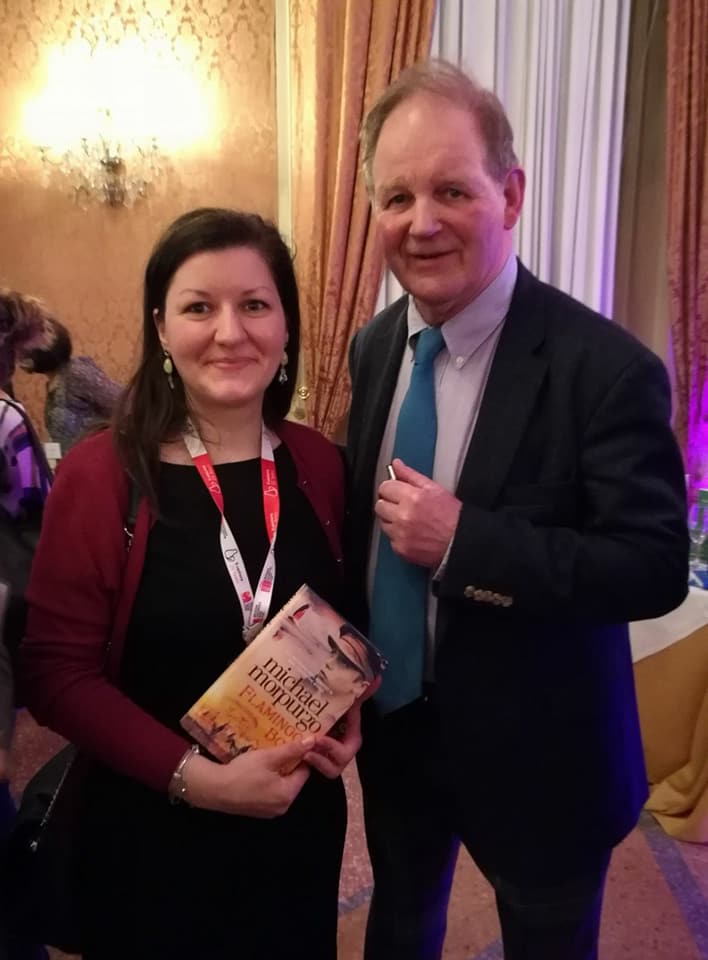
Which is the editorial project you are the proudest of?
I am not sure I could choose one. I think I enjoyed the most working at the two projects I mentioned above: the one with Adrian Șonka and the one with Simona Antonescu. I had the idea for both of them. These are the most difficult but also the most satisfying. I also have many projects planned for ORION too, I hope they will come true. One of the things you have to learn as an editor is to be patient. Usually a book takes a year to be done, or even more. You’d better be patient and perseverant if you want to properly accomplish your goals.
Are there things which cannot be fixed when you work in a publishing house?
Indeed, there are big errors and these are the ones you discover only after a book is published. No matter how confident you are you have done a good job with a book, when you have to approve it for print is always stressful because you know there is not turning back from that moment on. There is also the error of investing in a book which proves a fail in selling, but maybe error is too harsh, because each book is a bet you assume. There are a few cases when you are sure you have it, because the audience’s tastes are always surprising. Usually this kind of error is the opportunity to learn something. There is also the situation when you publish an author who turns to be very controversial. But here error is not the correct term either, because people change and you cannot hold yourself responsible for somebody else’s development. Our small literary small literary world has its controversies and unmendable errors, but I think most of them happen behind closed doors.
In my interview with Alex Moldovanhe stated that the translations he had made of children’s literature have helped him figure out what not to include in his texts. You are up-to-date with all it’s new in the Romanian publishing field and you know it deeply. Do you have a don’t collection you apply to the books you publish?
We all have our don’t-s because they are, in fact, preferences and internal rules that any publishing house applies. You can use the past tense simple for the narration, because it is considered a standard tense in Romanian, or you can go for the present perfect which is more casual and it’s not so outdated. Both options are grammatically correct, but they are two different styles and reflect a certain perspective (of the translator, the editor, the publisher etc.). There are many challenges in children’s literature: for example, the Hollywood inspired choice to soften the violence of the traditional children fairy tales (which, in fact, had not been addressed to children) or the option to keep the violence and all the conflicts in the story because our mind needs those clashes and, especially, their settlement. That’s one of the challenges, it’s hard to decide what’s right or wrong.
Personally, I cannot stand the books that don’t have at least one blank page at the end, where I can write down my notes. For me, it’s unacceptable to see a book which is filled in to the last row of the last page. I cannot stand the books with narrow margins, and that is for the same reason: I need at least two centimeters to note down my thoughts, to put an exclamation or a question mark or at least a smiley face. I usually read with a pencil in my hand: sometimes I make notes, sometimes I correct the mistakes I happen to see (a professional deformation I’ll never get rid of). I already have tens of pencils at home and I keep on buying, because I keep leaving them in the books I don’t finish reading, but which I hope someday I’ll do.
You have created a reading community around your book blog. Has the feedback you’ve got over the years for the book reviews you’ve written influenced your editor choices?
Yes, of course, I always pay attention to the readers’ preferences, to their critique, to their questions and all the discussions created around the books. Their opinions influence me a lot as a reader, but also as an editor, although less. As I was already mentioning, when a book reaches the readers it might be too late for an editor to buy its rights, firstly because someone else might have acquired it based only on a first pass manuscript and secondly because while you buy it, translate it, copy edit it, proofread it and print it the readers might not be interested in it anymore (in some extreme situations one can finish a book in 2 up to 6 months, but it is not recommended and cannot become a regular thing to do; you need at least one year to properly prepare a book for publication).
You blog is like a Romanian book market gazette. I always read your monthly posts with the novelties as well as I follow your Facebook page where the upcoming books are revealed. How do you manage to maintain a balance between Laura the reader/blogger and Laura the editor, part of a publishing house. How come your badge is not visible?
I am glad you find the monthly articles useful. As I have less and less time to take care of them, many times I thoughts to give them up, but then there was always someone who told me he or she found them useful so I continued to post them. Actually, I also find it useful to spend a whole weekend reading book presentation and thus have an overview of what’s new on our market and abroad. You get to be more into it when you write it down than when you just browse through the websites.
Maybe because I worked both for my blog and as an editor rights from the beginning it comes natural to me to continue like this. There are moments when it is hard to choose, but I think I managed to write only from the reader’s point on view on my blog and not as an editor. I rarely post about the books I am working at or details about my job as an editor, but I did realize this information is very appreciated by my readers. On the other hand, publishing is not a business where you should declare your eternal loyalty to a specific product. It’s not like when you deal with an operation system, a phone or a car. When you read you do it because you are interested in the topic, the author, the story and not necessarily because you see written on the cover Nemira, Humanitas or Polirom. Of course, you can also be interested in this, because each publishing house has its own portfolio and its own collections with a loyal audience. But, if you are interested the Medieval Age or in genetics, you want to read all the books on this topic, so the publishing house is not that important. Also, working in the book industry is a team work and is not limited to your team only. One way or another, each publishing house contributes to the effort of educating the audience and the reason I am both a blogger and an editor is that I want to take part to this collective effort too. On the one hand, at Nemira I publish books I find important, on the other I write on my blog about worthful books published by other publishing houses. I see no contradiction here, so, if my badge is not visible is even better.
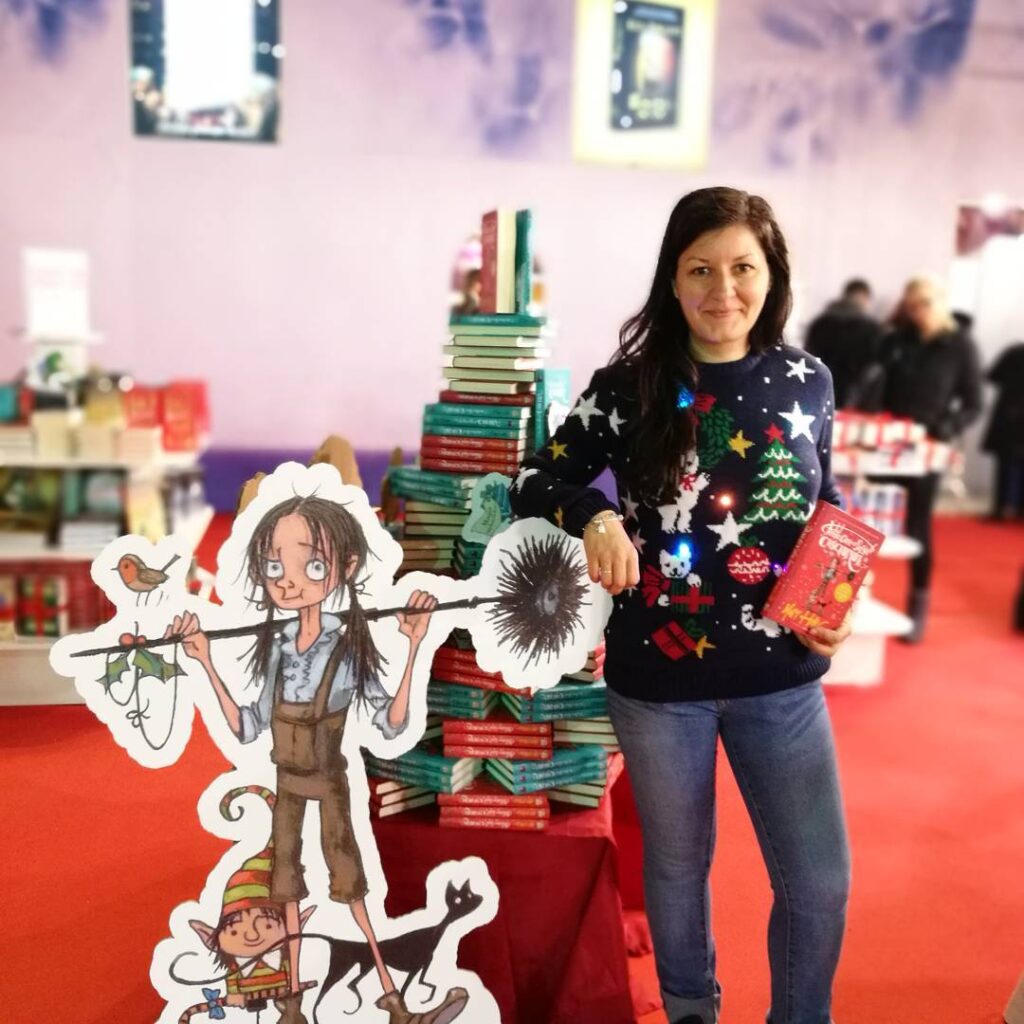
What advice would you give someone interested in pursuing a career in publishing? How should one prepare, what should he or she study?
A publishing house can be suitable both for people having a background in humanities (Philology, Foreign Languages, History, Philosophy, Psychology, Sociology) and for the ones who studied Economics, Informatics or Law. But they would work in different departments. These are jobs that you have to enjoy doing, there is no other way. So you can easily do a professional reconversion, especially if you love talking for our about the correct form of a word.
Inspired by one of the questions of your long-distance reader's Q&A, I would like to ask you with whom of the publishers from all around the world you would go out for a beer (in those few moments of free time you mentioned above)?
Publishers are quasi-anonymous people; therefore the readers rarely get the change to know them because their work usually takes place in the shadow of the book and its author. People know I am an editor because they have previously known me as a blogger, but there are many fellow editors who prefer not to discuss about their work and to whom I feel sometimes uneasy, thinking I go public too much. But that’s also an option, and I don’t think that I could do otherwise now. When attending the international book fairs, I had the chance to go out to dinner or to have a drink with all kind of editors from all around the world. I remember never-ending dinners where everyone was speaking English with all sort of funny accents and which I would have never left despite I was so tired and another busy day awaited me. I prefer not to mention any name, but I would like to portrait here the image of a small traditional Italian restaurant, where I spent some hours next to a Swiss agent, two German writers who had come to the fair by a caravan where two puppies were waiting for them, for which I gathered food under the table all night long, an Italian editor, a French one, an Indian one and how many more, and above all a discussion of which I don’t remember anything but the certainty that there are countless wonderful stories, both in real life and in literature, and that tiredness is nothing comparing to the beauty of a night like that.
And if you were to knit a sweater with small lights, like that famous one you got as a gift, what characters would you catch between the stitches?
Well, I would ruin all the fun with my characters. I would pick Kazantzakis’s Zorba and/or Oscar Wilde’s Lord Henri Wotton. Everyone with a hanging line, obviously. Fortunately, I don’t know how to knit such sweaters, so at the next fair I will wear the same Christmas sweater with lights, trees and reindeer.

